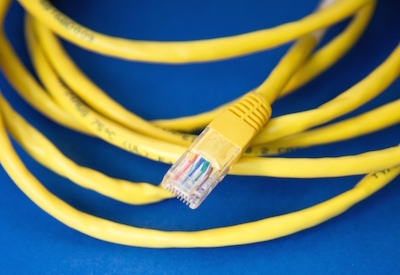How to Overcome Three Common PoE Troubleshooting Challenges, Part 2

Nov 5, 2019
By Dan Barrera
Part 1 discussed common challenges faced by electricians that are associated with Power over Ethernet (PoE), and presented a scenario in which a VoIP (Voice over IP) phone isn’t working. Here are two more scenarios.
Scenario 2: A VoIP phone needs replacing with a higher power device
An application may already have a network of PoE devices installed but wants to make some changes without removing their existing cabling infrastructure. On these types of jobs, electricians may be tasked with unplugging one type of device with one power requirement, such as a VoIP phone, and replace it with a completely different device, such as a piece of AV equipment, a CCTV camera or an access control panel. The complexity here is that the new device may require more power to function.
One way of seeing if the new device will work is trial and error — simply install it and hope for the best! However, this can waste a lot of time and is far from an informed approach. Instead, electricians should use a suitable testing tool — such as PoE verifier — to check the maximum power draw possible at the point, ascertaining if the system is up to the job before they install the new device. In a similar way to a traditional voltmeter, the PoE tester in this scenario tells the electrician whether a more substantial cable might need to be pulled to power the replacement device.
As with any type of installation, the quality of the cable has a big effect on performance. The right PoE tester can help isolate where infrastructure can be re-used to power different devices, but also where cable upgrades might be needed. This allows electricians to recommend that customers only replace problematic areas with high attenuation, for instance, allowing them to quote cost competitively for jobs.
Scenario 3: An IP CCTV camera is stuck in boot cycle
When IP CCTV cameras boot up, they ordinarily run through a test of all their extended functions, such as Pan-Tilt-Zoom, heaters or wipers. During this process, the camera is likely to draw a lot more power than required for its normal operation. If this extra power is not available, CCTV cameras can become stuck in a continual boot cycle, switching off and starting again. So even though with an initial PoE measurement it may appear that the cable meets the standard and provides enough power, it may be the case that there is not enough to manage these peaks.
To troubleshoot this, electricians should measure how much power the CCTV camera requires during start up. Then, use a PoE verifier to test the maximum power draw possible at its location on the network. If not enough power is available, then the power source, such as the switch, will need to be reconfigured to ensure it has a suitable capacity for start-up, as well as normal usage requirements.
Maximize the opportunity of PoE
These are just a few specific scenarios that electricians may encounter when installing or fixing PoE devices. There will no doubt be many different opportunities to work with PoE. However, the fundamentals of troubleshooting remain the same:
1. Pack PoE specific equipment
2. Check the device works
3. Check the device has enough power
4. Check the switch or injector has enough power
5. Check the cable quality
Electricians working with PoE undoubtedly will continue to face some challenges. For instance, troubleshooting lots of different PoE devices inevitably takes a long time and can prove annoying to the customer — unplugging, testing and plugging in again can lead to downtime or disrupt operations. With large customers, networks are also often highly secure, preventing electricians called in to troubleshoot from being able to easily log on and diagnose issues. What’s more, there is still a lack of ways to collect and log data about PoE devices, and therefore how they might be negatively affecting the performance of other devices on the network.
Yes, despite these challenges, PoE isn’t going anywhere any time soon. So, rather than shying away from this emerging technology, electricians should master common PoE troubleshooting practices now to ensure they are poised and ready to take advantage of the potential business opportunities that PoE offers.
Dan Barrera is Global Product Manager for Ideal Networks. Read Part 1 here: https://electricalindustry.ca/latest-news/6137-how-to-overcome-three-common-poe-troubleshooting-challenges-part-1
Photo by Markus Spiske on Unsplash

















